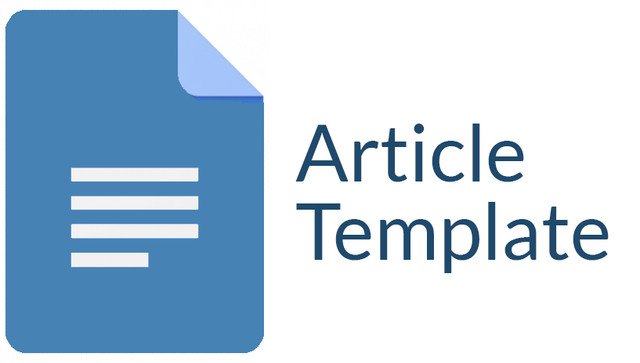Capacity Analysis of Degrees of Saturation of Traffic Transportation (Signalized Intersection of Road Gajah Mada - Munginsidi And Railway Bojonegoro)
DOI:
https://doi.org/10.30736/cvl.v9i2.1280Keywords:
Road Capacity, Degree of Saturation, Traffic Flow PerformanceAbstract
Gajah Mada Road and Munginsidi Road in the Bojonegoro district are important roads for the local community. The existence of these various necessary facilities and means will have an impact on the relatively dense traffic volume. Based on the review of the study location and the results of the survey as well as the data collection and processing carried out, the following research results were obtained: The capacity of the Monginsidi Road section is 1,185.52 PCU/hour with a degree of saturation of 0.59, while on the Gajah Mada Road section the capacity of the section roads amounted to 2,836.78 PCU/hour with a degree of saturation of 0.79. Traffic flow performance is determined by the level of road service, the road service level is classified as level C with the description that the flow is stable, but vehicle speed and movement are controlled. On the Gajah Mada Road section, the road service level is classified as level D with the description that the flow is approaching unstable, speed can still be controlled, and Q/Can still be tolerated. To create effective and efficient conditions, namely the realization of orderly, smooth, and comfortable traffic flow, there must be a balance between facilities and facility users so that various traffic problems can be resolved as early as possible.
Downloads
References
Jasti, P. C., & Ram, V. V. (2016). Integrated and Sustainable Service Level Benchmarking of Urban Bus System. Transportation Research Procedia, 17, 301–310. https://doi.org/10.1016/J.TRPRO.2016.11.096
Angelina, S., Vallée, D., & Louen, C. (2018). The barriers in the implementation process and the operation of innovative Urban transport: The case of BRT Jakarta. WIT Transactions on the Built Environment,176, 69–80. https://doi.org/10.2495/UT170071
Tomtom Traffic Index. (2021). Traffic Index Traffic Index results 2018 - 2021. Www.Tomtom.Com.https://www.tomtom.com/traffic-index/ranking/
Nova Nevila Rodhi, Risk Analysis of Surabaya – Bojonegoro Highway Improvement Project Based on Fuzzy Logic, Jurnal Teknik Sipil Universitas Islam Lamongan, Volume 07 Number 1 Year 2022
Sinha, S., Sadhukhan, S., & Priye, S. (2017). The Role of Quality Assessment for Development of Sustainable Bus Service in Mid-sized Cities of India: A Case Study of Patna. Procedia Engineering,198, 926–934.https://doi.org/10.1016/J.PROENG.2017 .07.138
Koike, H. (2014). Mobility perspective for a local city in Japan. IATSS Research, 38(1), 32–39. https://doi.org/10.1016/J.IATSSR.2014.05.006
Jia, S. (2021). Collaborative Strategies and Multiple Performances of Haze Pollution Control: A Case Study of Motor Vehicles. Arabian Journal for Science and Engineering, 46(2), 1631–1646.https://doi.org/10.1007/S13369-020-04846-3
Ambarwati, L., Indriastuti, A. K., Devia, Y. P., & Sari, D. N. (2017). Can the design of space-transport development strategies influence on noise pollution? MATEC Web of Conferences, 138.https://doi.org/10.1051/MATECCONF/201713807017
H. Canakci, M. Hamed, F. Celik, W. Sidik, and F. Eviz, “Friction characteristics of organic soil with construction materials,” Soils Found., vol. 56, no. 6, pp. 965–972, 2016. Media Komunikasi Teknik Sipil, 20(2), 125–133.
https://doi.org/10.12777/mkts.20.2.125-133
Badan Pusat Statistik. (2020). Perkembangan Jumlah Kendaraan Bermotor MenurutJenis. Www.Bps.Go.Id.
H. G. Ghazaryan, S. Z. Kroyan, S. V. Tovmasyan, and R.-V. H. Margaryan, “The issue of usage and preservation of soils which will be covered by water due to the construction of Kaps reservoir of the Republic of Armenia,” Ann. Agrar. Sci., vol. 16, no. 3, pp. 362–365, 2018. International Journal of Water Resources Development, 36(5), 839–854.
https://doi.org/10.1080/07900627.2019.1568232
IESR. (2019). Sektor Transportasi Menjadi Penyumbang Emisi GRK Indonesia Terbesar Kedua Setelah Sektor Industri. Https://Iesr.or.Id. https://iesr.or.id/infografis/sektor-transportasi-menjadi-penyumbang-emisi-grk indonesia-terbesar-kedua
Denicolo, P., Long, T., & Bradley-Cole, K. (2021). Data analysis, meaning interpretation and management/presentation issues. Constructivist Approaches and Research Methods: A Practical Guide to Exploring Personal Meanings, 131–154.
https://doi.org/10.4135/9781526402660.n10
Ding, C., & Song, S. (2012). Traffic Paradoxesand Economic Solutions. Journal of Urban Management, 1(1), 63–76. https://doi.org/10.1016/S2226-5856(18)300542
D. Lin, X. Yang, and C. Gao, “VISSIM-based Simulation Analysis on Road Network of CBD in Beijing, China,” Procedia Soc Behav Sci, vol. 96, 2013, doi: 10.1016/j.sbspro.2013.08.054.
Bucek, “Pertigaan Jalan Sultan Alauddin - AP Pettarani Macet Parah,” Celebes Media. [Online]. Available: https://celebesmedia.id/celebes/artikel/1009050322/pertigaan-jalan-sultan-alauddin-ap-pettarani-macet-parah
Y. Oktopianto, W. Y. Hastuti, and R. Phahlevi Marwanto, “Traffic Accident Cost Analysis Using The Gross Output (Human Capital) Method Approach,” Civilla : Jurnal Teknik Sipil Universitas Islam Lamongan, vol. 9, no. 1, pp. 1–10, 2024, doi: 10.30736/cvl.v9i1.1169.
A. Sahri, E. Purwanto, and A. Budiharjo, “Kajian Manajemen Lalu Lintas Kawasan Central Business District (CBD) di Kota Tegal,” vol. 8, no. 1, pp. 38–52, 2021, doi: 10.46447/ktj.v8i1.291.
H. A. Apriawal, “Tugas akhir evaluasi kinerja simpang tiga tak bersinyal di kota makassar,” 2019.
S. Hadi, S. A. R. Hanida, and R. Aprianto, “JURMATEKS Peningkatan Kinerja Simpang Ciceri , Kota Serang dengan Model,” vol. 7, pp. 1–13, 2024, doi: 10.30737/jurmateks.v7i1.5619.
Downloads
Published
How to Cite
Issue
Section
License
Copyright (c) 2024 Herta Novianto

This work is licensed under a Creative Commons Attribution-ShareAlike 4.0 International License.
Authors who publish in this journal agree to the following terms:
-
- Copyright on any article is held by the author.
- The author grants the journal first publication rights with the work licensed concurrently under a Creative Commons Attribution License that allows others to share the work with an acknowledgment of authorship and initial publication of the work in this journal.
- Authors may make separate, additional contractual arrangements for the non-exclusive distribution of the journal's published version of that journal (for example, posting it to an institutional repository or publishing it in a book), with an acknowledgment of its initial publication in this journal.
- Authors are permitted and encouraged to post their work online (for example, in an institutional repository or on their website) before and during the submission process, as doing so can lead to productive exchange, as well as earlier and greater citation of the published work.
- Published articles and related materials distributed under a Creative Commons Attribution-ShareAlike 4.0 International License
Civilla (Jurnal Teknik Sipil Universitas Islam Lamongan) by Universitas Islam Lamongan is licensed under a Creative Commons Attribution-ShareAlike 4.0 International License.
Based on a work at https://jurnalteknik.unisla.ac.id/index.php/CVL/index








